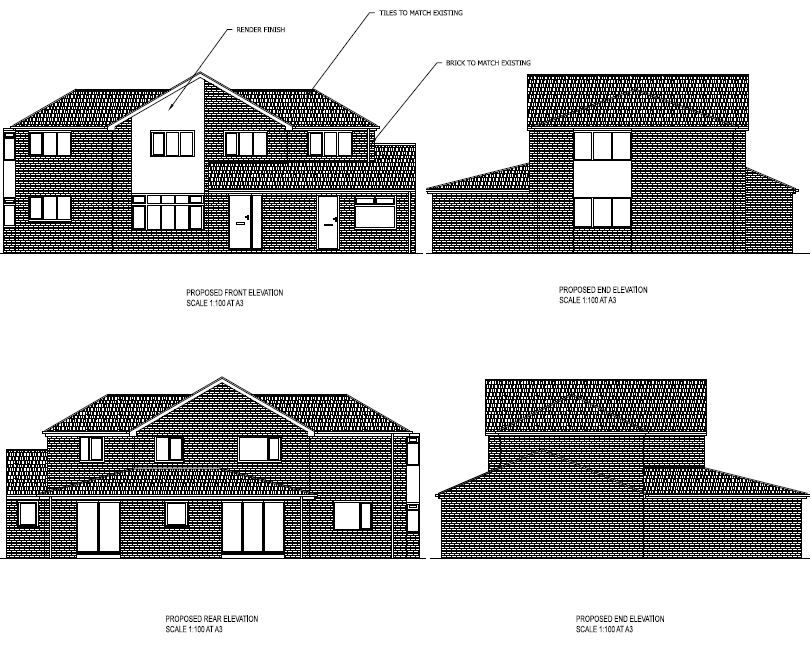34 Kestrel Avenue
Scope
Our Client sought Planning Consent from Rotherham Metropolitan Borough Council for the erection of first floor side extensions to both sides of the property. This proposal would not increase the footprint of the dwelling, merely extend the existing single storey extensions to the first floor.
In the refusal it was stated:
“ The Council considers the proposed first floor side extensions, by virtue of their excessive width would adversely affect the character of the host property and would be harmful to the visual amenities of the street scene”
Our Solution

The reason for refusal in this case has no basis in planning policy and is purely subjective. It was therefore our job to put forward a strong argument to refute this opinion.
The Council’s adopted ‘Householder Design Guide’ states that:
“The size and design of extensions should be subsidiary to the existing dwelling and allow the original building to remain dominant. It is important that an extension is in proportion with the existing house
We were able to structure an in depth argument to show that, despite the additions, the original portion still remained the dominant feature of the property. Further arguments were put forward with regards to the size of the plot and the positioning of the dwelling within that plot.
The case officer agreed, stating that:
"I consider that the proposed development incorporates elements of subordination in its design, in the form of lower ridgelines and setbacks from the front elevation of the existing dwelling that provide further mitigation against any visual harm."

The LPA also assigned significant weight to the Design Guide where it states that two storey side extensions should not exceed more than half the width of the original house. They confirmed that this is aimed specifically when only one half of the property is being extended but then continued to take both extensions into account cumulatively.
We successfully argued that only one side extension was over the council’s guidance of half the width of the house and that this was due to it following the footprint of the existing first floor. To make this fit in to the guidelines would have resulted in a building of inferior design.
The planning inspector agreed stating:
“Whilst this is contrary to the advice contained within the SPD, the proposed development would still achieve a complementary appearance on this detached dwelling, particularly through its symmetrical appearance being maintained. I accept that the proposed development would not be fully compliant with the guidance contained in the SPD. However, the scheme would be a well designed, subordinate development that would not result in any significant harmful visual effects.”
The appeal was allowed and planning permission was granted.
The takeaway from this case it that whilst significant weight is given to the Local Council Design Guides, these documents are simply guidance and not strictly policy. Planning desicions are often simply a matter of opinion. Therefore, even in cases like this where the proposal is found to be contrary to the guidelines, there is always the opportunity for an appeal to be successful. We have a wealth of experience in structuring this sort of argument, giving an appeal the best chance of success.
